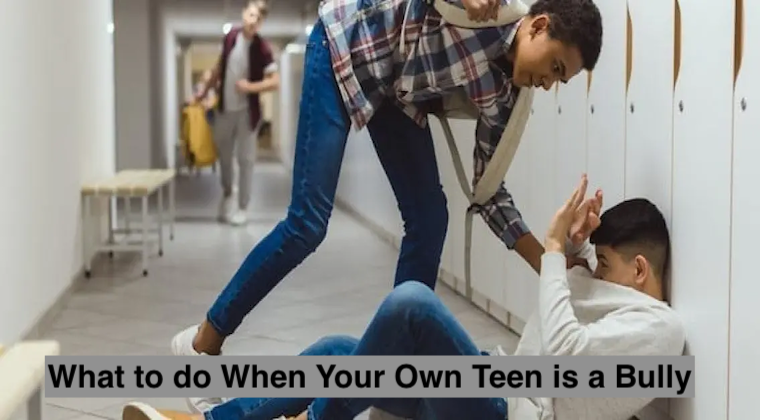Any parent experiences devastating news when they discover their teenager is becoming involved in bullying activities. Your mind keeps repeating the question about why your teen would behave as a bully. The answer to this inquiry extends beyond simple explanations because it represents a complicated issue. The analysis of bullying behavior requires both extensive examination of multiple factors that lead to this behavior and determination to identify fundamental sources. The following article provides complete guidance for parents dealing with this difficult situation by helping them understand their teen’s bullying reasons while presenting useful intervention methods.
Unraveling the Complexities: The Many Faces of Bullying
The first step requires understanding how bullying exists in various forms before exploring its root causes. Bullying exists beyond physical attacks since it encompasses verbal mistreatment and social isolation and online harassment and rumor distribution. The article 10 Alarming Bullying Facts Every Parent Should Be Aware Of presents additional information about different bullying types and their prevalence rates along with their effects.
The Search for Answers: Exploring the Root Causes
1. Lack of Empathy and Emotional Regulation:
A major reason behind bullying behavior consists of insufficient empathy skills. Teenagers face challenges in emotional intelligence development which results in certain adolescents having difficulty comprehending the effects their behaviors have on other people. Various elements produce empathy deficits in people which include:
- Young people who spend most of their time alone and lack contact with people from various backgrounds struggle to recognize and respect different emotional states.
- Teenagers with emotional difficulties such as anxiety or anger or frustration might choose bullying as their way to express their feelings by targeting other people.
- Young people learn their behavior by watching the adults who surround them. The acceptance of bullying behavior as normal behavior develops when teenagers experience or observe bullying either at home or in their community.
2. Seeking Power and Control:
Teenagers use bullying behavior to establish dominance when they feel powerless in other aspects of their lives. The following elements contribute to this behavior:
- People who experience low self-esteem tend to display bullying behavior even though this seems contradictory to their low sense of self-worth. Bullies engage in this behavior to increase their social status while feeling dominant.
- Teenagers base their choices heavily on what their peers think and do. The pursuit of peer acceptance and social advancement leads teenagers to practice bullying.
- The human preference for any form of attention leads people to choose negative attention over being ignored. Bullying serves as a method for teens to gain public attention while getting noticed by others.
3. Environmental Factors:
Environmental factors in a teenager’s life will shape their behavioral responses. This includes:
- Family Dynamics: When family members exhibit abusive or neglectful behavior or inconsistent disciplinary practices they contribute to bullying tendencies among their children.
- The existence of tolerant attitudes toward bullying alongside inadequate intervention methods in schools creates an environment which allows bullying to persist.
- Young people become desensitized to aggression through direct violence exposure and media consumption which makes bullying behavior seem normal.
- The combination of social media platforms creates an environment where cyberbullying thrives because teens can perform anonymous harassment while simultaneously spreading rumors and social exclusion. The social media platform offers both a space for rumor spreading and individual exclusion practices. The negative psychological effects bullying creates in teenagers can persist throughout their lives. The Long-Term Effects of Cyberbullying on Mental Health examines the complete psychological effects that cyberbullying has on teenagers.
4.Underlying Mental Health Issues:
Bullying symptoms sometimes appear as indicators of existing mental health disorders including:
- Conduct disorder represents a behavioral disorder which causes persistent patterns of aggressive antisocial conduct.
- The disorder known as Oppositional defiant disorder (ODD) consists of angry or irritable mood and argumentative as well as defiant or vindictive behavior patterns.
- Teens who have ADHD often demonstrate impulsive behaviors and difficulties controlling their emotions which can lead them to engage in bullying actions.
Addressing the Issue: Effective Intervention Strategies
After gaining knowledge about the potential root causes you can start working on finding solutions.
1. Open and Honest Communication:
- Make your teenage child feel comfortable discussing their actions in a setting that is both safe and free from criticism.
- Active and empathetic listening occurs when you avoid interruptions and any form of criticism.
- Ask your teen open-ended questions which help them evaluate their conduct and its effects on other people.
2. Setting Clear Boundaries and Consequences:
- You need to explicitly state that bullying stands as an unacceptable behavior.
- Establishing clear disciplinary measures that match the age of your teen for their bullying actions.
- Teach your teenager different methods for expressing their emotions and handling conflicts in a constructive manner.
3. Seeking Professional Help:
- Get your teenager help from a therapist or counselor.
- The therapist will assist your teenager in developing empathy while helping them control their emotions and dealing with existing mental health conditions.
- The family therapy approach helps patients tackle problems that stem from their family environment.
- Enter “Teen bullying help near me” in your search engine to locate nearby assistance. The Long-Term Effects of Cyberbullying on Mental Health explores these impacts in detail.
4. Fostering Empathy and Social Skills:
- Encourage your teenager to join activities which help them build empathy by volunteering or mentoring others.
- Help your teen learn essential social skills which include communication along with conflict resolution and assertiveness.
- The search term “how to build empathy in teenagers” will help you discover effective methods for helping your adolescent.
5. Monitoring and Supervision:
- Supervise your teenager while they use the internet and interact with others.
- You should establish specific rules that explain the correct ways for using technology.
- Stay involved in your teen’s life to maintain awareness about their friends and activities.
6. School Involvement:
- Talk to the school about the bullying actions your teenager has been involved in.
- Work with the school to create an action plan for solving the problem.
- You should fight for a school environment which provides safety and support to every student.
7. Modeling Positive Behavior:
- The way you behave should act as a positive example for your teen through displaying empathy alongside respect and responsible conduct.
- The way you handle conflicts together with your communication methods with others becomes observable behavior for your children.
Why is my teen a bully? requires patient understanding while demonstrating commitment to change. The root causes must be addressed through proper intervention methods to help your teen become both responsible and compassionate. The process of asking ‘Why is my teen a bully?’ leads to understanding instead of blame. The distinction between these two approaches stands vital for creating beneficial changes. Seeking professional assistance demonstrates your strength rather than your weakness. You stand among many people who are navigating this challenge.
FAQ: Understanding and Helping a Teen Who Is a Bully
Teens often bully because they struggle with emotions like anger, fear, or low self-esteem. Some seek control or respect, while others imitate negative behavior they’ve seen at home, school, or online. Understanding the root cause is the first step toward change.
Common causes include lack of empathy, poor emotional regulation, peer pressure, family conflict, exposure to violence, or underlying mental health issues such as ADHD or oppositional defiant disorder. Each teen’s reason can differ, so observation and open communication are key.
Parents can help by setting firm boundaries, modeling respectful behavior, and talking openly with their teen without judgment. Encourage empathy through volunteering or mentorship programs and consider professional counseling for behavior management.
If your teen’s bullying continues despite family discussions or affects their relationships, it’s time to seek help. A licensed therapist can address emotional regulation, teach empathy, and manage any underlying mental health conditions contributing to the behavior.
Schools and parents should collaborate to build a consistent plan of accountability and emotional support. This includes school counseling, clear anti-bullying policies, and regular communication between teachers, counselors, and parents to monitor progress.










